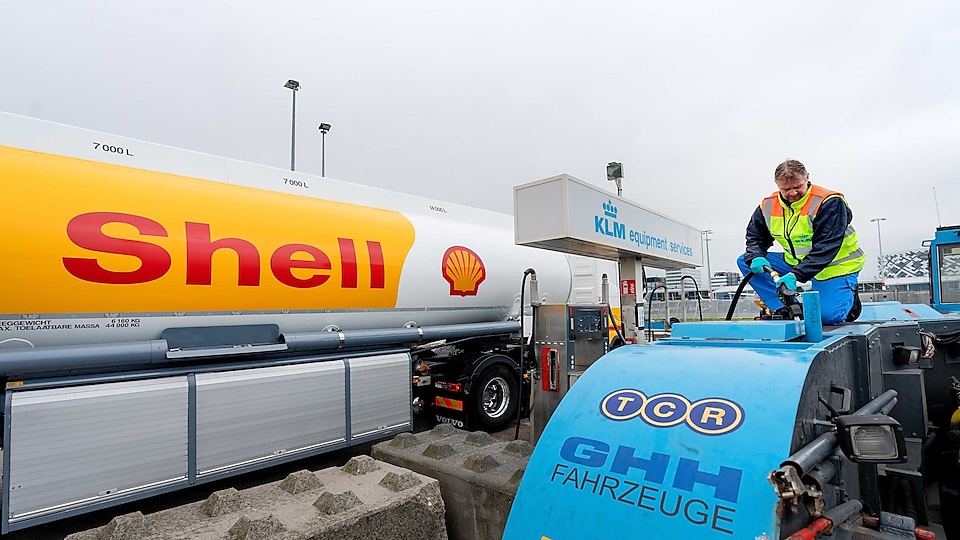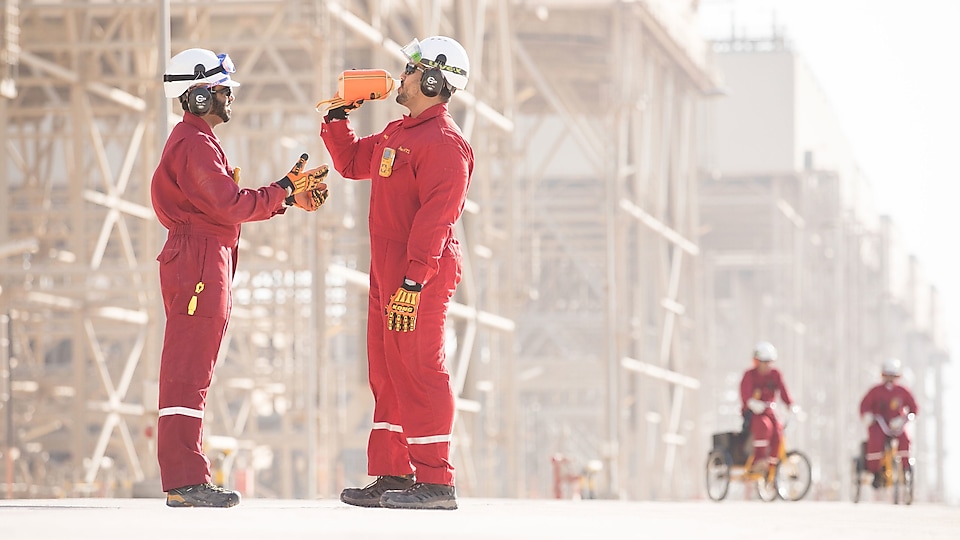
Fuelling CRT Fleets Today: The Paraffinic Portfolio for a Cleaner Tomorrow
With focus on sustainability and decarbonisation growing, learn more about alternative fuel solutions that can help commercial fleets emit less
By Mousa Baraka, GTL Market Development Manager of Shell in collaboration with Katrina McDonnell, Head of Speciality Fuels and Services, Certas Energy on Jun 17, 2020
Today, freight transport accounts for 8-10% of all global carbon emissions, a number which is expected to grow further still due to a projected tripling in freight demand by 2050.1The International Transport Forum estimates that, by this time, there will be an 111% increase in emissions, resulting in 6.2 billion tonnes of CO2.2 Additionally, e-mobility is still not considered a viable solution for heavy-duty trucks on a large commercial scale – IHS Markit projects electric vehicles will account for less than 5% of the market by 2040 – meaning conventional diesel is seemingly in it for the long haul.3
If these numbers prove anything, it’s that the transport industry needs to start thinking beyond traditional diesel, so businesses can operate more sustainably. However, this is not a straight forward question to tackle. As a recent global Shell Commercial Fuels survey shows, 52% of commercial road transport businesses feel it is actually becoming more complicated to decide which fuel is best for their business.4 Katrina McDonnell, Head of Speciality Fuels and Services, Certas Energy, agrees: “The energy industry and governments must work together to raise awareness and overcome these barriers to kickstart the transport sector on the path to a low-emission future.”
The Paraffinic Fuel Portfolio
Diesel fuels with performance additives, such as Shell FuelSave Diesel, are increasingly used by fleet operators to: improve engine efficiency; provide better fuel economy; and lower tailpipe CO2 emissions, compared to conventional, unadditivated diesel. At the same time, there is also a growing list of available alternative fuel solutions that can help address the wide-spreading focus on sustainability and decarbonisation. Several of these are classed as paraffinic fuels, a relatively new generation of cleaner-burning transport fuels produced using the Fischer-Tropsch process, that emit near zero sulphur and aromatics.5

Gas-to-Liquids (GTL)
Perhaps the most widely known paraffinic fuel is GTL. Derived from natural gas, it offers fleets a drop-in solution that can be used in existing and new diesel engines without the need for vehicle modifications. GTL fuel can specifically help reduce local emissions such as nitrogen oxide and particulate matter, compared with conventional, unadditivated diesel. “There are secondary benefits too, that some customers really value,” adds Mousa Baraka, GTL Market Development Manager, Shell, “such as storage stability – in that you can leave GTL fuel in a tank for five years without affecting its quality – enhanced cold-flow properties, and bio-degradability.”
“The best way to think of GTL, is as a transition fuel. It’s one initial step that a fleet can take in terms of its energy transition, because the investment and infrastructure costs are minimal – they are almost zero.”
Mousa Baraka
Hydrotreated Vegetable Oil (HVO)
Another option is HVO, which goes through a similar production process to GTL, ultimately delivering the same chemical product. Since its feedstock (used vegetable, cooking oil or animal fats) is directly available as residual product from food production and use, HVO is a renewable option which does not require additional use of biomass, bio-component or agricultural crops. While not carbon neutral on a well-to-wheel basis, it can have a significantly better CO2 footprint than its GTL counterpart, as the feedstock has already taken CO2 from the environment.6 That being said, it does have limitations. “At the moment it’s more expensive than GTL and it’s not as widely available,” says Baraka, “the source of the feedstock should also be considered – using HVO can bring CO2 reduction benefits only when the feedstock comes from sources that are sustainable and do not lead to deforestation.” There is also growing interest in GTL and HVO blends, especially in Europe. Since the two paraffinic fuels are chemically similar, they blend easily, producing a good performing fuel that can have both local emission and CO2 benefits.
Biomass-to-Liquids (BTL)
Lastly, BTL arguably marks the least developed paraffinic fuel, though potentially the most exciting. “As the technology develops, the International Energy Agency forecasts a major expansion for bioenergy,” McDonnell states, “potentially providing 29% of total transport final global energy demand by the 2060s.” While it can help reduce CO2 emissions on a well-to-wheel basis, it can also have the same fuel specification and performance as conventional unadditivated diesel, providing an even higher energy density. However, though it can effectively be generated by almost any type of biomass, it is significantly limited in its availability and therefore relatively expensive.
“Take GTL fuel for example, its higher energy density means it is perfectly suited for heavy-duty applications that cannot be easily transitioned to other low-emission technologies.”
Katrina McDonnell
Applications for the Transport Industry
Because paraffinic fuels can replace conventional diesel without requiring engine or infrastructure changes, they have a wide range of potential applications throughout the transport sector. Their status as a cleaner-burning diesel alternative makes them highly suitable for public transport vehicles, where focus on local air quality is constantly increasing. “We’re seeing the greatest uptake in the areas where e-mobility isn’t currently commercially viable,” McDonnell says. “For GTL fuel in particular, the added-value benefits are especially attractive to transport business running through urban centres.”
Added to this, they demonstrate improved storage ability compared to conventional unadditivated diesel and, as a result of their higher cetane number, offer a better starting performance when in cold conditions. “Take GTL fuel for example,” McDonnell says, “its higher energy density means it is perfectly suited for heavy-duty applications that cannot be easily transitioned to other low-emission technologies.”
Paraffinic fuels are also classified as non-toxic, odourless and readily-biodegradable, making them a great alternative fuel for recreational and logistical activities.7 “We even have the Dutch football club Feyenoord’s groundsman as a customer,” says Baraka. “His family disliked him coming home smelling of diesel having being sat on the lawnmower all day, so he switched his equipment over to Shell GTL Fuel as soon as he heard about its odourless qualities.”

GTL Fuel: The Perfect Paraffinic For Today?
Despite there being a mosaic of paraffinic fuel options, GTL fuel is perhaps the most readily viable option for many fleets and therefore warrants closer attention.
“The best way to think of GTL, is as a transition fuel,” states Baraka. “It’s one initial step that a fleet can take in terms of its energy transition, because the investment and infrastructure costs are minimal – they are almost zero.” With reduced local emissions and its suitability for both new and older heavy-duty diesel engines, GTL fuel is undoubtedly a long-term viable industry alternative, especially when you consider that the diesel truck engine is expected to retain a majority market share until at least 2040.8
McDonnell echoes this: “GTL fuel is more than an alternative solution for diesel heavy-duty engines. It is a practical next option for the world of commercial transport when it comes improving air quality.” And indeed – with an increase in OEM acceptance in regards to their vehicle specifications – many companies are already using it to reduce local emissions without experiencing any performance or productivity losses. That includes Amsterdam Airport Schiphol, which now runs almost all of its 4,000 ground vehicles on Shell GTL fuel.
Paraffinic fuels could provide an effective and lasting alternative to conventional diesel, with many companies already using them to reduce their carbon footprint without experiencing reduction in performance or productivity.
Finding the Right Fuel Mix
It’s clear, then, that paraffinic fuels could provide an effective and lasting alternative to conventional diesel, with many companies already using them to reduce their carbon footprint without experiencing reduction in performance or productivity.
Furthermore, companies are not alone on this transitional journey. Working with an energy expert, such as Shell Commercial Fuels, can help them find the right solution for their particular use-case or business need while also offering them the technical knowledge and support required to get the best out of the fuel(s) they choose.
Put another way, for heavy-duty truck operators, paraffinic power offers an immediate option today to a more sustainable future. “Rather than focusing squarely on fuels of the future,” McDonnell concludes, “what we should be advocating is the ‘fuels for now’ that will forge the ‘fuels of the future’”.
Footnotes
1 International Transport Forum, ‘ITF Transport Outlook 2019’, 2019.
2 International Transport Forum, ‘ITF Transport Outlook 2019’, 2019.
3 Eye For Transport, ‘Diesel Will Continue to Dominate Trucking to 2040 says IHS Markit’, 2018.
4 Shell Commercial Fuels, ‘Thought Leadership Transport Sector Global Report’, 2018. This survey commissioned by Shell Commercial Fuels and conducted by independent research firm Edelman Intelligence, polled 400 fuel decision makers in the transport sector in eight countries: Canada, Germany, Malaysia, Philippines, Singapore, South Africa, Thailand, Turkey.
5 The Fischer-Tropsch involves a collection of chemical reactions that allow the conversion of a mixture of carbon monoxide and hydrogen into liquid hydrocarbons, that can be substituted for petroleum products. (https://www.sciencedirect.com/topics/engineering/fischer-tropsch-process).
6 A well-to-wheel analysis is the assessment of the environmental impact of a given product or service, with regard to both greenhouse gas emissions reductions and energy efficiency enhancement, throughout its entire lifespan. (https://ec.europa.eu/jrc/en/jec/activities/wtw)
7 Paraffinic Fuels for Europe, ‘Paraffinic Fuels: Environmental Benefits’, 2017.





